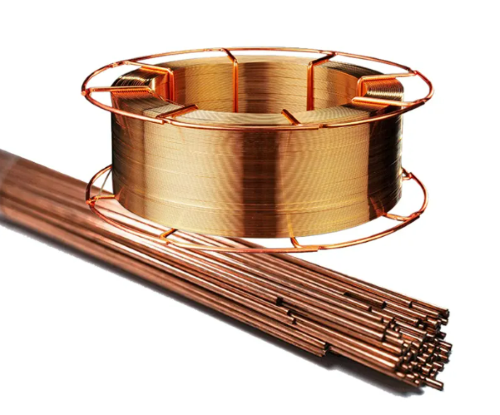Recreating Liquid Metal from Terminator with Galium
In the world of visual effects, liquid metal transformations have left a lasting impression for their striking visual impact. One of the most iconic examples is the T1000 villain in the 1991 film Terminator 2, where advanced CGI brought the character’s shapeshifting metal form to life. For years, the liquid metal effect of the T1000 has been celebrated as a peak achievement in visual effects. Recently, however, a daring experiment set out to recreate this legendary effect using real metal—specifically, the metal gallium.
In this experiment, the creative team Corridor Crew utilized gallium’s unique properties to mimic the T1000’s liquid metal effect. Gallium proved to be an ideal material for this purpose due to its low melting point and non-toxic nature, allowing it to be melted and reshaped safely in a controlled environment. By combining 3D printing, silicone molds, and precise heating techniques, the team achieved the liquid metal “forming up” effect without relying on CGI. This project was made possible with support from Stanford Advanced Materials (SAM), who provided the gallium needed to bring the team’s ambitious vision to life.
Unique Properties of Gallium
Gallium’s success in this experiment can be attributed to several unique physical and chemical properties that set it apart from other metals:
- Low Melting Point: Gallium melts at just 29.8°C (85.6°F), slightly above room temperature. This low melting point allows gallium to melt easily in one’s hand or with minimal heat, making it ideal for experiments requiring precise temperature control. Unlike metals that demand intense heat, gallium offers flexibility for projects involving repeated melting and re-solidification, as demonstrated in Corridor Crew’s visual effects experiment.
- Non-Toxicity: Unlike mercury, another liquid-like metal, gallium is non-toxic and safe to handle in small amounts. This makes it practical for creative projects, educational displays, and demonstrations. Gallium’s safety was critical to the experiment, allowing the team to handle the metal confidently and focus on achieving the desired visual effect without health risks.
- Industrial Versatility: Gallium’s applications extend far beyond visual effects. It plays a vital role in electronics and technology, particularly in semiconductors, LEDs, and high-performance devices. Compounds like gallium nitride (GaN) are valued for their efficiency in high-speed transistors, power devices, and 5G telecommunications. Gallium-based materials are becoming increasingly essential in cutting-edge technologies due to their performance advantages over traditional silicon-based materials.
- Reactivity and Stability: Gallium is highly stable in solid form and resistant to oxidation, making it relatively easy to handle and store. However, it exhibits unique reactivity with certain metals, particularly aluminum, which can create potential for niche applications and experimental fields.
Gallium in the Special Effects Experiment
In their experiment, the Corridor Crew team leveraged gallium’s unique characteristics to recreate the liquid metal effect, taking inspiration from Terminator 2’s T1000 transformation. To achieve this effect, they followed a series of steps involving 3D printing, molding, and careful heating to melt and reform the metal.
Creating the Mold: First, the team created a 3D scan of a head, which was printed as a model and used as the base for a silicone mold. This silicone mold captured intricate details, allowing the final gallium casting to look as realistic as possible.

Casting with Gallium: After creating the mold, gallium was melted and poured in to cast a metallic replica. Gallium’s low melting point meant that minimal heating was required to liquefy the metal and fill the mold, making it practical and safe to handle. The cooled, solid gallium cast retained all the fine details of the mold, providing a realistic and detailed metallic form.

Melting and Filming: Once the gallium cast was complete, the team began the visual effects process by applying heat guns to the cast. As the gallium absorbed heat, it gradually melted, starting from the outer edges. They carefully recorded this melting process, capturing the “deconstruction” effect that resembled liquid metal flowing or morphing into a new shape.

Reversing the Footage: In post-production, the team reversed the footage of the gallium melting, which created the illusion of liquid metal “forming up” into a solid object. This reversal was essential to recreating the classic T1000 transformation effect, with gallium giving it a realistic fluidity that CGI alone cannot easily achieve.

Challenges and Solutions
Throughout the experiment, the Corridor Crew faced challenges unique to working with real metal. Controlling the melting speed of the gallium required careful monitoring to ensure the heat was evenly distributed, preventing the metal from collapsing too quickly or unevenly. Gallium’s relative stability, however, allowed them to achieve a smooth effect despite these challenges. The team also had to stabilize the cast and prevent sudden movements to maintain continuity, which was crucial in creating a convincing effect.
In the end, gallium’s distinctive properties made it an excellent choice for the experiment, delivering an authentic, real-world alternative to CGI while capturing the T1000’s signature liquid metal effect. This creative approach demonstrated the potential of materials like gallium to bring new levels of realism to visual effects.
To see the entire process in action, you can watch the full video here: https://youtu.be/40kkKLQfeMA
Future Applications of Gallium
While gallium’s properties made it ideal for Corridor Crew’s liquid metal experiment, this versatile metal has a wide range of potential applications beyond the world of visual effects. Its unique characteristics—such as its low melting point, non-toxicity, and adaptability in compound forms—make gallium a valuable resource in numerous scientific and industrial fields.
Electronics and Telecommunications: Gallium compounds, especially gallium nitride (GaN), are essential in the development of advanced electronics. GaN transistors are highly efficient, supporting high-speed switching and higher power densities than traditional silicon transistors. This efficiency is vital in power devices and high-frequency applications, including 5G telecommunications, where speed and precision are critical. GaN-based technology has enabled smaller, faster, and more efficient electronic components, driving industry innovations.
Renewable Energy: Gallium arsenide (GaAs), another gallium compound, is widely recognized for its high efficiency in converting sunlight to electricity. GaAs-based solar cells are known for their exceptional performance in aerospace and other demanding environments, where durability and energy efficiency are paramount. Gallium’s contributions to renewable energy solutions help advance solar technology and make it possible to create more effective, long-lasting energy sources.
Medical and Chemical Research: Gallium’s biocompatibility and unique reactivity open the door for potential medical applications. Research is ongoing to explore its uses in targeted cancer treatments and certain imaging technologies. Additionally, gallium’s catalytic properties in chemical reactions may be beneficial in developing new, environmentally friendly industrial processes.
Creative and Educational Demonstrations: Given its non-toxic nature and low melting point, gallium is well-suited for educational demonstrations and creative projects. It provides a safe and interactive way to explore the properties of metals, making it ideal for teaching environments or hands-on experiments. Its distinct liquid and solid states can be showcased in museums, classrooms, and even media production, offering audiences a unique glimpse into material science.
Conclusion
Gallium’s unique combination of properties—its low melting point, non-toxicity, stability, and adaptability in compound forms—demonstrates its versatility and potential for innovation. The Corridor Crew experiment showed how gallium’s distinctive qualities can bring a classic liquid metal effect to life without relying on CGI, adding an element of realism rarely seen in visual effects.
Stanford Advanced Materials’ support for this project exemplifies how scientific curiosity and creative applications can combine to explore new material capabilities. Gallium’s applications extend far beyond visual effects; its role in electronics, renewable energy, medicine, and education highlights a bright future for this remarkable metal across various fields. From practical uses to experimental applications, gallium continues to unlock new possibilities for scientists, engineers, and creatives alike.




